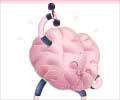Clinicians should encourage Major depressive disorder patients to engage in at least some exercise, suggest studies. Major depressive disorder (MDD), also called clinical depression, is defined by Mayo Clinic as a chronic medical illness that ‘causes a persistent feeling of sadness and loss of interest and which can cause physical symptoms, too’.
This disorder is difficult to treat due in part to the limited accessibility and effectiveness of current treatments, indicating the need for alternative and augmentation treatment strategies.Many studies have conclusively shown that exercise, either as stand alone or in combination with other treatments, is an effective treatment strategy for patients with major depressive disorder.
However, there is only a limited and scattered data on what type of exercise is beneficial or how much exercise is required and how long the patient with MDD must exercise to achieve effective results.
So, Chad Rethorst and Madhukar Trivedi, of the Department of Psychiatry at the University of Texas Southwestern Medical Center, Dallas, reviewed relevant data from trials and developed recommendations for clinicians so as to provide them with a knowledge base to prescribe exercise to their MDD patients.
“Despite the substantial evidence supporting the use of exercise in the treatment of MDD, previous studies have not provided a clear indication of the proper dose of exercise needed to elicit an antidepressant effect,” says Chad Rethorst.
The authors describe the evidence supporting the use of exercise in the treatment of MDD, provide evidence-based recommendations for prescribing exercise, and address practical considerations related to prescribing exercise in real-world treatment settings.
Some of their recommendations are as follows-
• Exercise frequency: Three to five exercise sessions per week.
• Intensity of exercise for Aerobic exercise – achieving a heart rate that is 50 to 85 percent of the individual's maximum heart rate (HRmax). According to the CDC (Centers for Disease Control and Prevention) ‘a person's maximum age-related heart rate can be obtained by subtracting the person's age from 220. For example, for a 50-year-old person, HRMax would be calculated as 220 - 50 years = 170 beats per minute (bpm). So the 50% level is 170 x 0.50 = 85 bpm, and 70% level is 170 x 0.70 = 119 bpm’.
• Intensity of exercise for Resistance training – upper and lower body exercise with three sets of eight repetitions at 80 percent of the maximum weight that the person can lift one time.
Improvement in symptoms can be seen in as little as four weeks after starting exercise, but the reviewers suggest exercising for at least 10 to 12 weeks to get the most benefits.
Regarding apprehension on whether patients with MDD will be willing to participate in an exercise program, the reviewers indicated that only about 15 percent of patients dropped out of exercise programs in the reviewed studies, which they say is comparable to any medication or psychotherapy studies.
‘Taken as a whole, these findings suggest that exercise doses below the current recommendations may still be beneficial for patients with MDD, therefore, clinicians should encourage patients to engage in at least some exercise, even if they do not exercise enough to meet current public health recommendations,’ they concluded.
Source-Medindia















